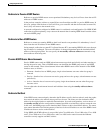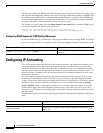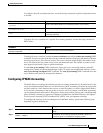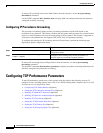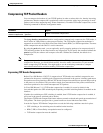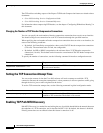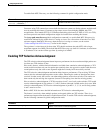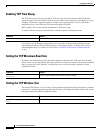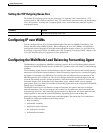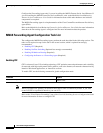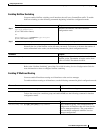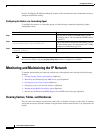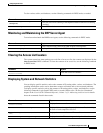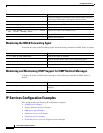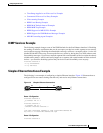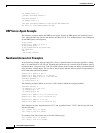
Configuring IP Services
Configuring IP over WANs
IPC-115
Cisco IOS IP Configuration Guide
Setting the TCP Outgoing Queue Size
The default TCP outgoing queue size per connection is 5 segments if the connection has a TTY
associated with it (like a Telnet connection). If no TTY connection is associated with it, the default queue
size is 20 segments. To change the 5-segment default value, use the following command in global
configuration mode:
Configuring IP over WANs
You can configure IP over X.25, Switched Multimegabit Data Service (SMDS), Frame Relay, and
dial-on-demand routing (DDR) networks. When configuring IP over X.25, SMDS, or Frame Relay,
configure the address mappings as described in the appropriate chapters of the Cisco IOS Wide-Area
Networking Configuration Guide. For DDR, refer to the “Preparing to Configure DDR” chapter of the
Cisco IOS Dial Technologies Configuration Guide publication.
Configuring the MultiNode Load Balancing Forwarding Agent
The MultiNode Load Balancing (MNLB) Forwarding Agent is the Cisco IOS-based packet redirector
component of the MNLD Feature Set for LocalDirector, a product in the Cisco family of load balancing
solutions.
The Forwarding Agent discovers the destination of specific connection requests and forwards packets
between the client and the chosen destination. When a Forwarding Agent receives a connection request,
the request is forwarded to the MNLB services manager, the LocalDirector-based component of the
MNLD Feature Set for LocalDirector. The services manager makes the load-balancing decision and
sends the Forwarding Agent the optimal destination. After the destination is specified, session data is
forwarded directly to the destination by the Forwarding Agent, without further services manager
participation. There is no limit to the number of Forwarding Agents that can be configured in the MNLD
Feature Set for LocalDirector.
The MNLD Feature Set for LocalDirector comprises hardware and software that runs on multiple
network components. The services manager runs on the Cisco LocalDirector chassis and makes the
load-balancing decisions. The Forwarding Agents run on Cisco IOS router and switch platforms and
forward packets to and from the selected destination. Separating the decision-making and
packet-forwarding tasks enables much faster packet throughput. The underlying Cisco architecture,
ContentFlow architecture, enables the following features:
• High availability
• Unbounded scalability
• Application-aware balancing
• No single point of failure
• Unmatched performance
Command Purpose
Router(config)# ip tcp queuemax packets
Sets the TCP outgoing queue size.



